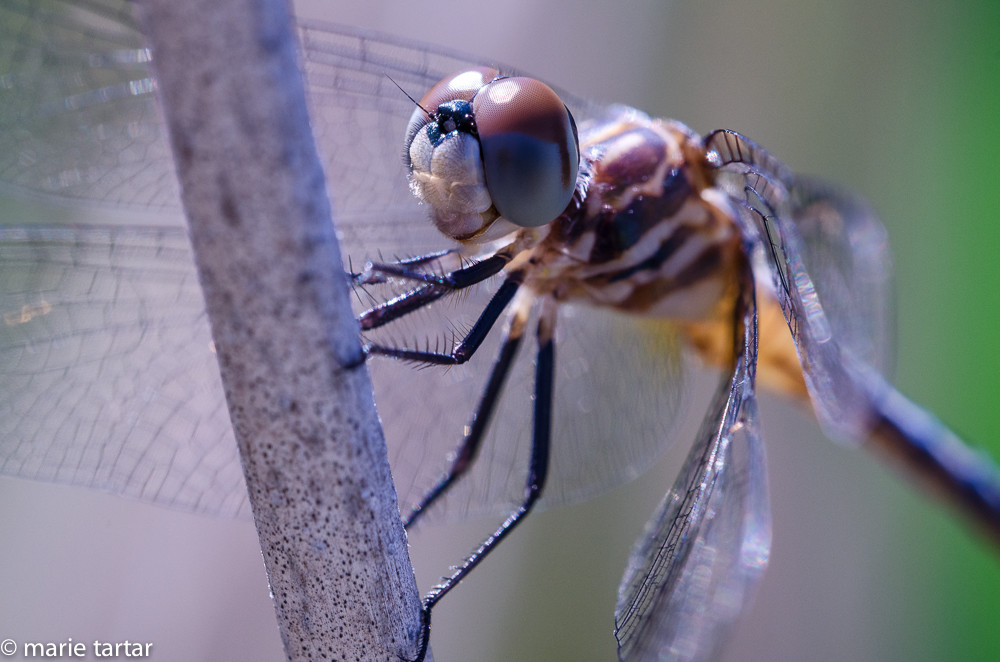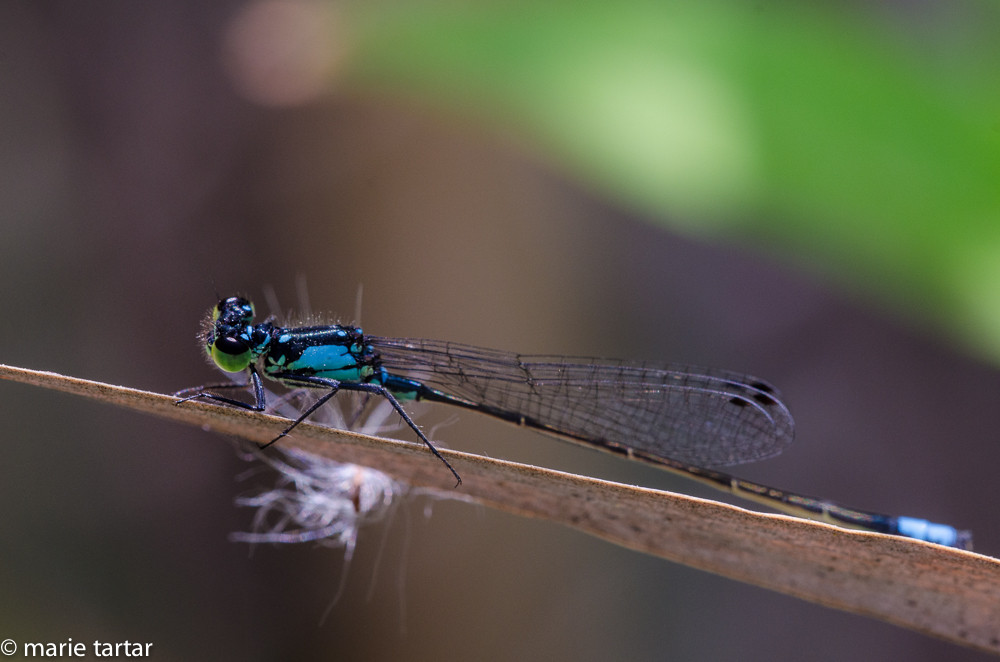
Our friend and photo gear guide extraordinaire, Steve Cirone, introduced us to the denizens of Santee Lakes a few years ago. Steve is THE best bird photographer I know, and his ultra-macro images of dragonflies, bugs, and other members of the animal demi-monde of San Diego are an inspiration. We’ve learned a lot from him, from technical ideas (shooting macro with a monopod instead of a tripod, for greater flexibility) to gear ideas (shooting macro with ring flashes), as well as ideas where and when certain critters can be found. Santee Lakes is a favorite haunt of his that we’ve enjoyed as well, hunting for damselflies and other macro subjects, as well as a variety of aquatic animals.
Being just after the summer solstice, it seemed a great way to kick off summer by heading inland to a sultrier clime. Heat should be good for something and according to Steve, dragonflies can be expected if it is hot and dry. The reeds skirting the lakes are good hunting grounds for these iridescent beauties, so at 7:30 am on the first official Sunday of summer, we headed to Santee Lakes with our friend Rick and a carback full of gear.
At first, I thought our excursion was going to be a bust. It seemed very quiet along the waterfront, although the requisite conditions were present. Photography is a muscle that needs to be exercised, so lacking a really intriguing subject, I busied myself with bees ducking in and out of cup-shaped yellow wildflowers. Unlike other times we’d been there, there weren’t a lot of dragonflies flitting about. But, it only takes one good subject to make a shoot, and I lucked out with an extraordinarily stationary and tolerant dragonfly. (Another saying in photography is to wait for the dumb one; i.e., the animal that will put up with you in its face).
Of course, this is not an effortless endeavor. In addition to the heat and my sunglasses sliding forward at inopportune times off my head, there were hazards to avoid. Namely, being speared in the eye by one of the aforementioned reeds on the water’s edge. Working at this magnification (I was shooting with a 150 mm macro lens) means the depth of field (how much of the image is in focus) is razor thin (just millimeters). Balancing the monopod, concentrating so hard that one’s eyes are crossed and knotted, the slightest movement (aka breathing) and critical focus is lost. That is assuming the monopod leg doesn’t slip at an untimely turn or the wind bounce the branch on which your subject is poised. Have I mentioned patience as a desirable trait in a photographer?
But sometimes it all comes together and you can’t believe your good fortune. Your subject seems to be regarding you and not inclined to take off with each flash. You are able to try variations, and get closer, closer still.
A little flicker below me catches my eye. What’s this? A damselfly!
The damselfly’s stick-like body nearly disappears in a head-on view.
The dragonfly had retreated deeper in the reeds while I was occupied with the damselfly, but not so far away that I couldn’t finesse a few additional reed barriers, trying not to move too quickly or abruptly, or to tangle myself or the camera rig up in the process. The good news: this time the dragonfly alighted on a reed at STANDING height-no need to squat, sit on the ground or contort myself to reach it!
A good morning’s shoot and warm-up for summer shooting!
-Marie
Resources: http://www.stevecirone.com/





